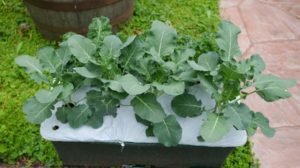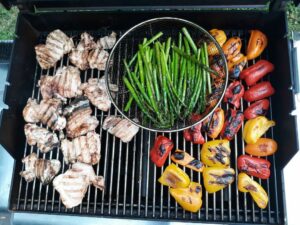Happy Celiac disease Awareness Month! To celebrate, let’s talk about how to eat gluten-free and healthy.
Gluten-free and Healthy
Going gluten-free can be a big turning point to greater awareness and eating healthier. All of a sudden, people need to start reading labels, and many begin to wonder why there are all of these ingredients they can’t pronounce and why high fructose corn syrup seems to be in everything. Or maybe after years of eating anything and staying slim, the pounds have started creeping upward, or blood pressure, blood sugar or cholesterol numbers are moving in the wrong direction.
Here are some quick suggestions to make your diet healthier:
- Go for healthy fats. Omega 3s are so important! Increase the amount you eat of fatty fish, like salmon, trout, flounder, sole, rockfish, sardines and more. Plant based options include flax, chia, walnuts, etc.
- Calcium is key! This can be from Greek yogurt, cheese, or milk, or if you avoid dairy, choose sardines, collards or turnip greens, beans, nuts, etc.
- Switch to a GF baking blend using sorghum, garbanzo beans, almond or coconut, brown rice or other whole grains.

- Have fruit or vegetables with every meal—5-9 servings a day. That can be as easy as an orange with breakfast, a veggie soup and a salad with lunch, dried fruit for snack and 2 servings of veggies along with dinner.
- I’ve just updated the Farmers’ market list for 2021, too–a great place for veggie and fruit inspiration!
- Include legumes (i.e., dried beans and peas) with your meals regularly; increase your intake of these foods gradually to limit gas.
- Drink your water! 8 glasses a day are important to stay hydrated, especially when you increase the amount of fiber you eat.
- Include nuts and seeds several times a week, which also contain monounsaturated fats and can help control blood cholesterol levels.

- Find a way to reduce stress: acupuncture, meditation, deep breathing, talking to a friend, dancing, walking the dog, or whatever works for you. This under the umbrella of nutrition, because most people don’t reach for Brussels sprouts when they get stressed.
- Use healthy oils, like olive, avocado, etc. and eliminate trans fats.
- Limit sugar and high fructose corn syrup.
- Take care of yourself. This includes sleeping well, reducing stress, and doing things you enjoy. You’re worth it.
———————–
May is also Ehlers-Danlos Awareness Month. If that’s a new term to you, it’s a connective tissue disorder that’s actually linked to Celiac and other digestive conditions. I recently did a presentation for the DC Metro EDS/HSD Support group on Digestive Disorders in EDS and HSD and How Nutrition Can Help.
- Since many people are starting to travel again, I’ve updated my gluten-free “grab & go” list.
- I’m excited about a new cookbook, Gluten-free Baking for Beginners by In Johnna’s Kitchen. It was just released on May 18th– I got to preview a copy and it looks fantastic, and delicious, especially for people with multiple food restrictions.
- Gluten-free and kosher? There are upcoming (online) classes on baking GF breakfasts…and upcoming dates for picnics, BBQs & more.
———————–
Cheryl Harris, MPH, RD is a Registered Dietitian Nutritionist and Certified Wellcoach in Fairfax VA (currently, remotely!) She helps people with a range of dietary issues, including Celiac Disease, GI digestive issues and more. Let’s get you on your way to achieving your goals and feeling great! Email or call 571-271-8742.

Hi,
I wanted to thank-you for this particular newsletter. It is helpful to hear someone that I trust say I am doing things right. My combination of issues makes eating a challenge. Last year it was even more so because of out of stocks of staple gluten free items. It is getting better now. The best to you and yours.
Glad to help!